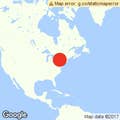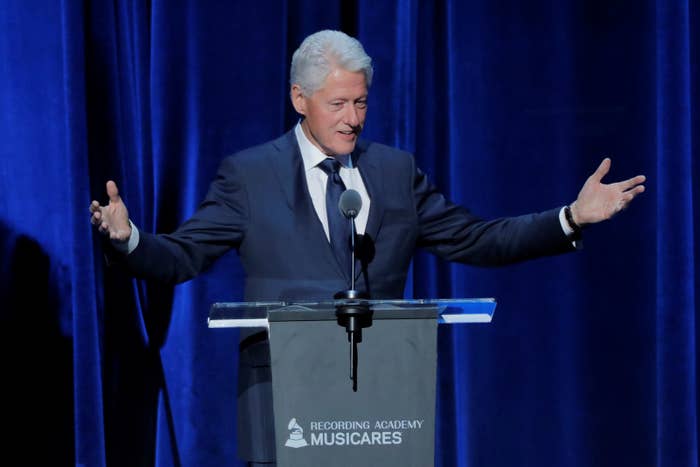
As the US–Russia relationship continues to twist and turn, documents declassified on Thursday show just how much the position of the two countries has — and hasn’t — changed.
Ties between the two countries have been among the issues dominating Donald Trump's first term, with everything from accusations of election meddling to tussling over Ukraine and Syria. No one knows exactly what the relationship between Trump and Russian President Vladimir Putin is really like — when the two met in Helsinki in July there was no one else, except for translators, in the room.
Things weren't always so informal. Previous presidents kept meticulous records, and on Thursday a host of those files, from the presidency of Bill Clinton, were released.
They include transcripts and notes from his meetings with Boris Yeltsin, Russia's first post-Soviet president. Putin, and Russians more generally, do not speak warmly of Yeltsin, who they remember for weakness both at home and before the wider world.
Things were warmer between “Bill” and “Boris,” as the transcripts show.
Below are 13 special moments in US–Russian history. Some show how much of the US–Russian relationship is specific to who happens to sit in the Kremlin and the White House. Some show that the relationship, and its problems, is bigger than any two men.
1. Yeltsin faced reelection in 1996, and his only real challenge came from the Communist candidate Gennady Zyuganov. Yeltsin tried to explain to Clinton how damaging it would be for Russian reforms if communism returned to Russia. Clinton, in turn, told him he should eat more, at which point Yeltsin began going over his diet.
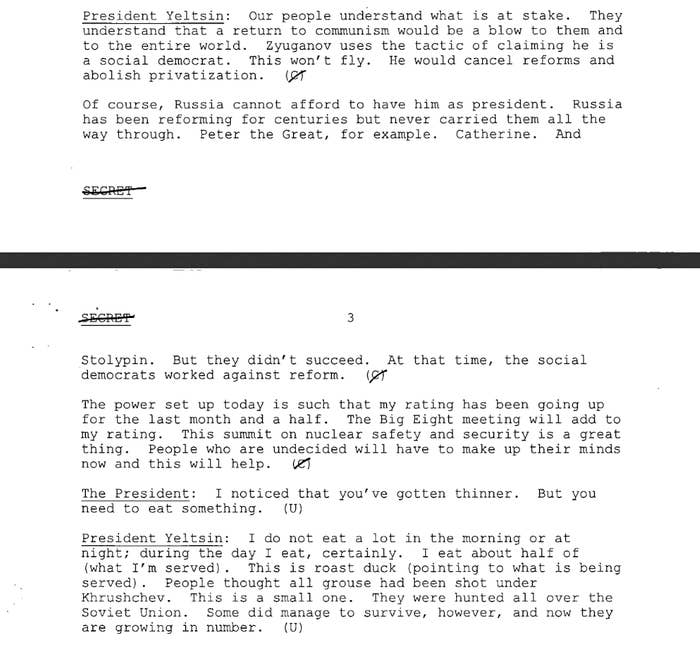
2. In the same conversation, Yeltsin tried to convince Clinton that if the Communists were elected, they would “destroy everything.” To impress upon him how bad it would be, Yeltsin told Clinton, “They want to take back Crimea.” That would, in fact, not fall to Zyuganov, but to Putin, 18 years later.
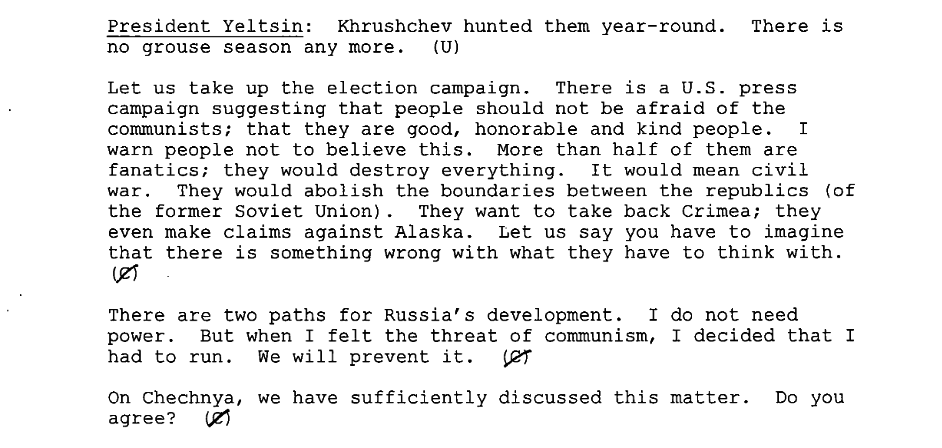
3. Yeltsin asked for a $2.5 billion loan for Russia “for my election campaign.” (Clinton said he would go to the International Monetary Fund.)
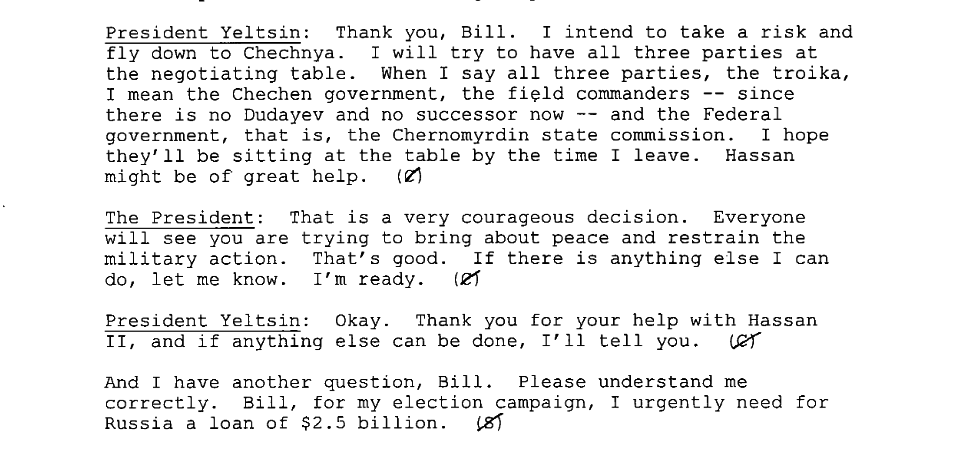
4. The election campaign took its toll on Yeltsin, but Clinton told him he looked wonderful dancing with girls in the band. “I’m disappointed that no one sets up events for that like me in my campaign,” he added. (Clinton’s relationship with White House intern Monica Lewinsky would not come to light for another two years, though this would have been the same year that her superiors, concerned about how much time she spent with Clinton, moved her to the Pentagon.)
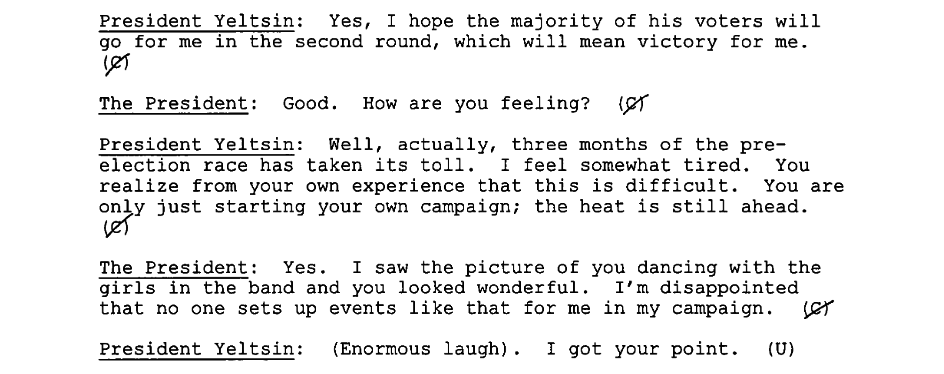
5. Yeltsin won reelection. Then it was Clinton’s turn to campaign. Yeltsin said he would root for him — but promised no Russian interference in the American election. (In fairness, Putin also denies electoral interference.)

6. In 1997, at a summit in Helsinki, Yeltsin showed at least one similarity with Putin. He expressed concern about NATO enlargement including former Soviet republics, like Ukraine.
NATO expansion is still blamed by many for being the original sin of the post-Soviet relationship, and Ukraine is a major sticking point in US-Russian relations today.
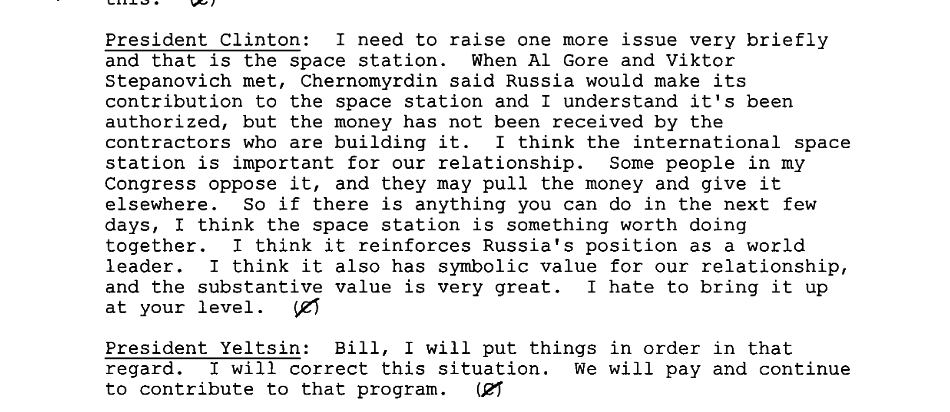
7. At a working lunch at the same summit, Clinton told Yeltsin he would like Russia to graduate out of Jackson–Vanik — a law that impacts trade relations with countries that restrict freedom of emigration — but can’t, because Russia changed the law such that those “involved in secret questions” need to wait 10 years instead of five. That’s a problem for Congress, he says. And then this happens.

Yes, that is Benjamin Netanyahu, currently prime minister of Israel.
Jackson–Vanik would not be repealed until 2012, at which point Russia was able to join the World Trade Organization — and Congress approved the Magnitsky Act, which sanctioned Russians allegedly responsible for the death of Sergei Magnitsky, a lawyer and accountant who died in a Russian jail cell after uncovering tax fraud.
8. At a private dinner that evening, Clinton told Yeltsin that he should encourage India to get along with Pakistan and China by following the example of the United States and Russia.
India is still at odds with Pakistan and China, but, then, so are the United States and Russia.
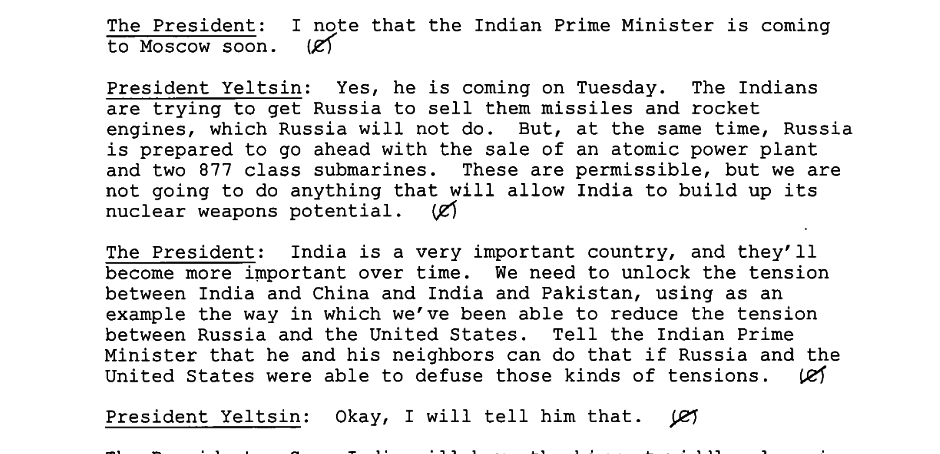
9. In Denver that spring, the Russian president talked about his own weight loss, which the leader of the free world compared to losing old friends. (There’s no present-day equivalent for this.)
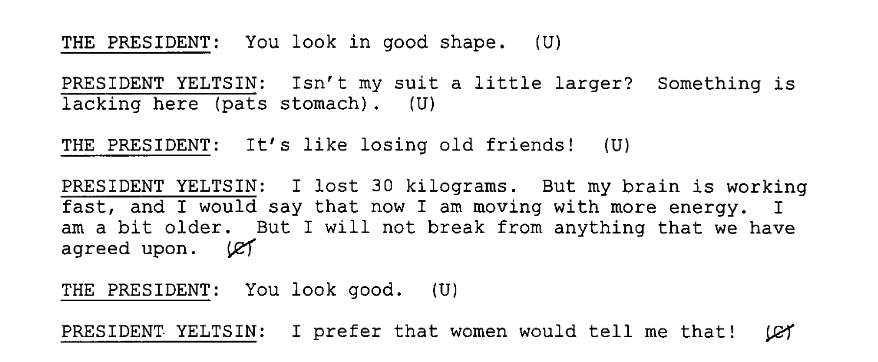
10. In May 1998 in Birmingham, England, the Russian president recounted the time he went one-on-one with a bear. According to the transcript, he did an imitation of the bear. (Again, no straightforward present-day equivalent.)
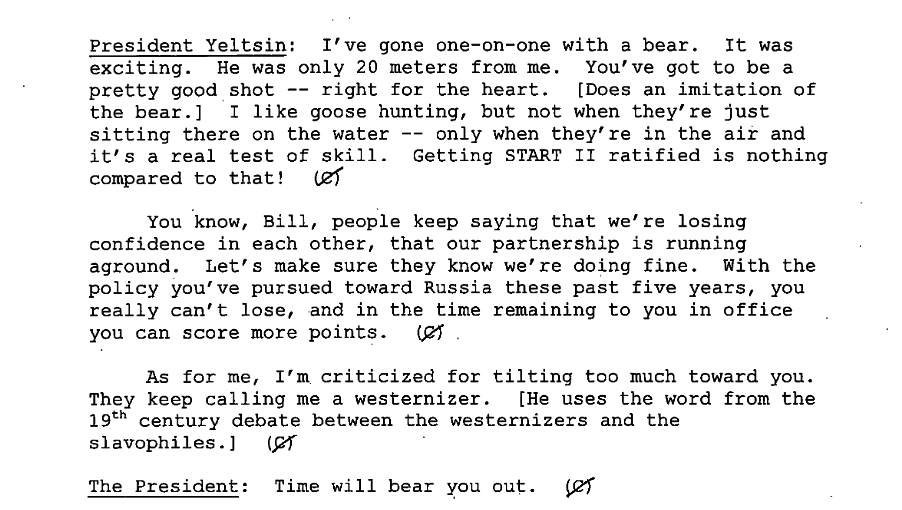
11. At that same meeting, Clinton said that people would look back in 20 years and laud their efforts and say that they, Clinton and Yeltsin, were right. Yeltsin, in turn, called Clinton his friend and co-leader.

12. In March of the following year, Clinton informed Yeltsin that the United States and Europe had decided to launch airstrikes against military targets in Serbia to intervene against Slobodan Milošević. Yeltsin called the news “a great pity” and said their friendship would never be the same. The sense of betrayal Russia felt over Serbia is still, according to many, a point of friction between the United States and Russia, and part of why Russia is so against western military intervention elsewhere.
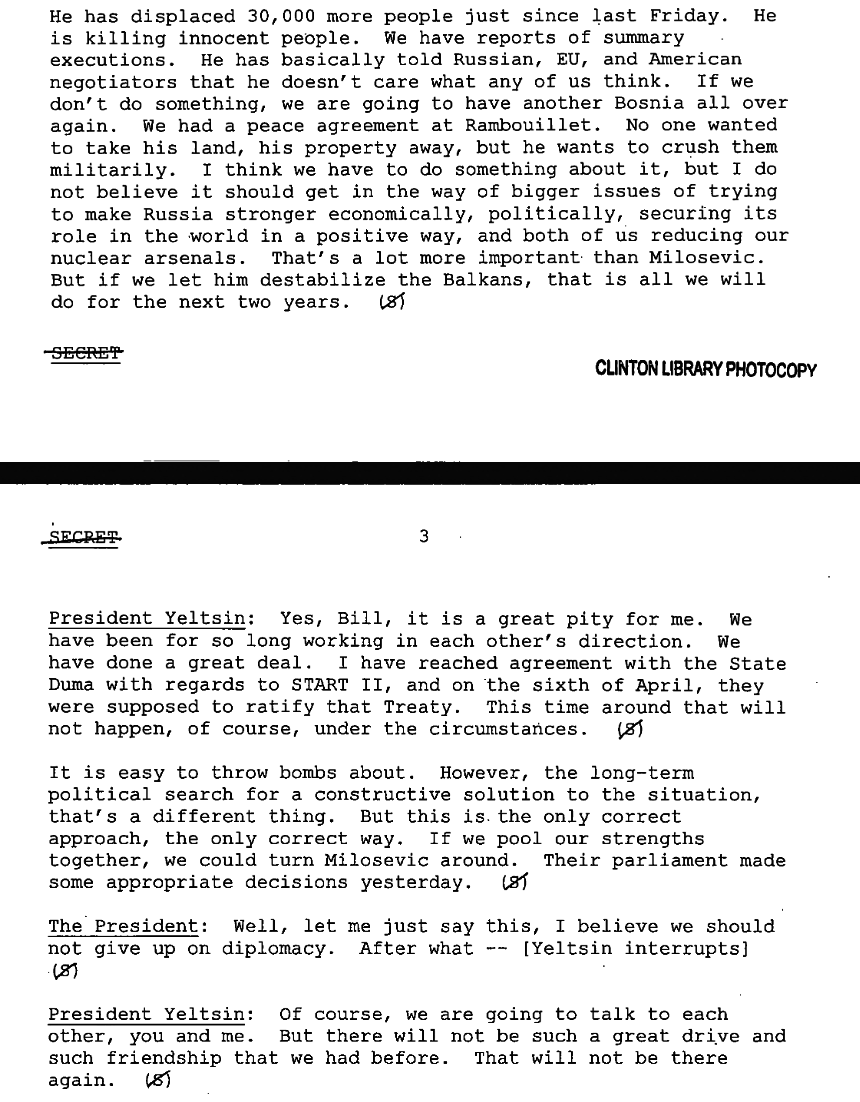
13. But the two men did keep talking, and, the next year, Yeltsin told Clinton about a man whom he considered to be thorough, strong, and sociable. The man would be a good international partner, and Clinton would meet him soon.

The rest, as they say, is US–Russian history.
The declassified documents can be read in their entirety on the Clinton Digital Library website.

